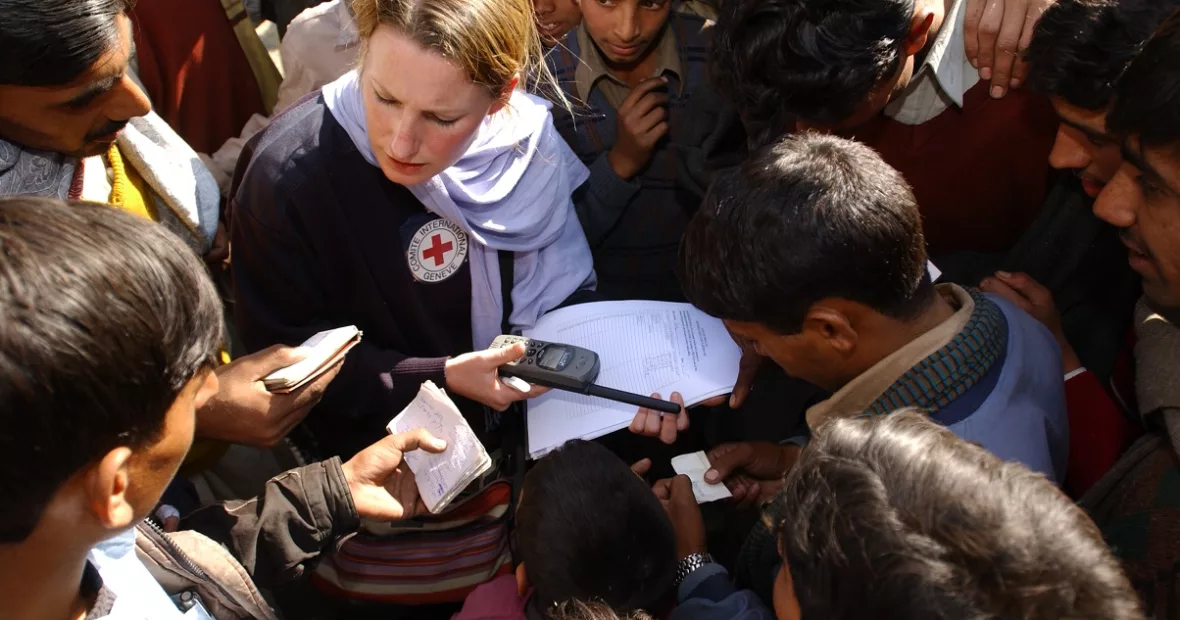Civilians are heavily dependent on space systems for everyday life. Yet, those same space systems can also be critical for national and international security. While the civilian and military uses of space are governed by international law, the current framework needs to be strengthened to ensure the protection of civilians, particularly in light of the increasing militarization and weaponization of outer space.
In this post, part of a series on War, Law, and Outer Space, Nivedita Raju, a researcher at the Stockholm International Peace Research Institute (SIPRI), presents an overview of space security governance and proposes three steps towards this objective.
It is difficult to over-state the importance of space systems for civilians. From communications, transportation, healthcare, disaster management, humanitarian relief and even facilitating trade through financial systems, space systems are vital for daily life. The UN Office of Outer Space Affairs (UNOOSA) has further highlighted the role of space systems in fulfilling the Sustainable Development Goals, such as utilizing space technologies for climate action and gender equality.
Space systems also play a critical role for national and international security, enabling functions such as early warning (missile detection), military communications and navigation. Many space systems are therefore ‘dual-use’, serving both military and civilian purposes. Space activities have always been used for military purposes – the United States and the Soviet Union used satellites for intelligence, surveillance and reconnaissance (ISR) as early as the 1950s. Satellites also provide a means of verification for arms control treaties, by assuring a state party to a treaty that the other party is complying with obligations. As a result, space systems and their governance, are linked with strategic stability and arms control.
These strategic dimensions spurred states to adopt regulations on the conduct of space activities. These are articulated in several legal and normative frameworks, including the international space treaties, UN General Assembly resolutions, UN Charter and international humanitarian law (IHL), as applicable. The space treaties were negotiated and adopted in the UN Committee on Peaceful Uses of Outer Space (UNCOPUOS). The first four treaties, namely, the 1967 Treaty on Principles Governing the Activities of States in the Exploration and Use of Outer Space, including the Moon and other Celestial Bodies (Outer Space Treaty or OST), the 1968 Agreement on the Rescue of Astronauts, the Return of Astronauts and the Return of Objects Launched into Outer Space, the 1972 Convention on International Liability for Damage Caused by Space Objects (Liability Convention), and the 1976 Convention on Registration of Objects Launched into Outer Space (Registration Convention), specify various rights and obligations for states in their exploration and use of outer space. These four treaties have been ratified by a large number of states (though not all). In 1979, an additional treaty, the Agreement Governing the Activities of States on the Moon and other Celestial Bodies (Moon Agreement), was adopted, which has been ratified by 19 states to date.
Several challenges have emerged for the governance of outer space. First, the space treaties contain some provisions with diluted and ambiguous wording that is being increasingly questioned in light of worrying trends in space activities today. These trends refer to the increasing militarization and weaponization of outer space, including the development and testing of counterspace capabilities by a number of actors, and threats to space systems that are not explicitly regulated by the above-mentioned international space treaties. Second, the dynamics of the global space sector have shifted considerably, making it more difficult to enforce international space law. Many states have space ambitions today and further, there is a notable trend of diversification in both actors and activities in outer space. States are no longer the sole entities engaged in space activities, and commercial entities now play a key role in providing space-based services to civilian, governmental and military end-users. Space activities have also diversified, with aims such as space resource utilization and space debris remediation now increasingly possible due to rapid technological advancements.
In this regard, the UNCOPUOS has continued to discuss governance measures regarding the peaceful uses of space, focusing on safety and sustainability aspects. Deliberations at UNCOPUOS have been relatively constructive, exhibited most recently by the 2019 Guidelines on the Long-term Sustainability of Outer Space, which were adopted by consensus. The guidelines contain measures relevant to the protection of civilians and critical infrastructure. For instance, Guideline A.2 advises states to consider specific elements when developing or amending national space frameworks, such as space debris mitigation, and address risks to people, property, public health and the environment associated with the launch, operation and re-entry of space objects. Similarly, Guideline B.1 recommends that states share information on space objects and orbital events that may affect the safety of outer space operations, which would enable effective responses in situations where critical civilian infrastructure risks being affected.
In contrast, security-related issues of space have been more difficult to address. Space security is primarily deliberated at the UN Conference on Disarmament (CD), which has been deadlocked for decades. The ‘prevention of an arms race in outer space’ (PAROS) has been on the agenda of the CD since the 1980s. The deadlock emerged as a result of differing views and priorities to advance the agenda of PAROS, particularly over what kinds of capabilities to regulate, and the most feasible means to do so. Through two separate General Assembly resolutions, one group of states proposed verifiable agreements to prohibit anti-satellite systems, while another group proposed to prohibit any type of weapon from being stationed in space. Furthermore, some states viewed existing international law as insufficient to prevent an arms race in space, while others argued that the current international legal framework including customary and treaty law would suffice. Thereafter, states diverged over whether to focus on developing a new legally-binding treaty, or develop voluntary measures. A key point of concern also raised by developing states was the need to avoid restricting access to space and space technologies in contravention of the principle of non-discrimination and equality for all states under Article I of the OST.
Several states have since made attempts to advance space security governance. In 2008, China and Russia introduced a draft treaty on the prevention of placement of weapons in outer space (PPWT), which was later amended and resubmitted for consideration in 2014. The EU had also led an initiative for a Code of Conduct on Outer Space Activities, which collapsed in negotiations in 2015. In addition, UN Groups of Governmental Experts (GGE) have been convened to discuss specific topics, including the adoption by consensus of transparency and confidence-building measures in outer space activities in 2013, and the GGE convened in 2018 and 2019 on further practical measures for PAROS, which failed to reach consensus.
Discussions on space security were reinvigorated as the subject of the UN Open-ended Working Group (OEWG) initiated by the United Kingdom, on reducing space threats through norms, rules and principles of responsible behaviour in 2021. Established by UNGA resolution 76/231, the OEWG convenes four times over 2022 and 2023, with the final session starting next week aiming for recommendations to be adopted by consensus. Furthermore, a new GGE, established by UNGA resolution 77/250, initiated by the Russian Federation, will convene in 2023 and 2024, aiming to make recommendations by consensus on substantial elements of an international legally binding instrument on PAROS, including, inter alia, on the prevention of the placement of weapons in outer space. Notably, the format of the GGE is distinguished from the OEWG; whereas the OEWG facilitates inclusivity by inviting participation of all states as well as international and civil society organizations, industry and academia, the membership of the GGE will be restricted to 25 states only – including five Permanent Members of the UN Security Council and the rest based on geographical representation.
In all these fora, states, international and civil society organizations, and other actors have consistently emphasized the need to avoid conflict in space, as it would have devastating consequences for all. While this is certainly accurate, ensuring that such an outcome is prevented will require further measures. Whether military uses of space occur during peacetime, or conflict, there are risks to civilian uses of space systems. The following steps are therefore proposed as a starting point to develop policy measures that limit the human costs of military operations in or in relation to outer space.
Identify gaps and establish common understanding of existing international law
The use of space systems is governed by international space treaties and other applicable international law. However, while dynamics of the global space sector have evolved rapidly, multilateral progress on space security has been slow, leaving gaps to be addressed. These gaps are not limited to international space law, but also other bodies of applicable international law.
Within space law, this is evident from the need for shared interpretation and common understanding in certain provisions of the space treaties, evidenced even during recent discussions at the OEWG. For instance, some states referred to the use of space for ‘exclusively peaceful purposes’ even though this term is used strictly in relation to the moon and other celestial bodies (and not outer space in general) under Article IV of the OST. This implies that some may misinterpret this provision as extending the principle of ‘exclusively peaceful purposes’ to all of outer space. Similarly, there is no clarity on Article IX of the OST, which has an obligation for states to engage in ‘international consultations’ if it has reason to believe that an activity would cause potentially harmful interference. Since this wording is subjective, there is a need for shared understanding on what constitutes ‘potentially harmful interference’, and further, what amounts to a ‘consultation’.
Furthermore, shared understanding on how other relevant international laws apply to outer space, including their interplay with space law, is lacking. IHL applies to outer space during armed conflict. This has been reaffirmed by many states (for example, Australia, Brazil, Canada, Philippines, South Africa and the member states of the EU during recent discussions at the OEWG, and in UNGA resolution 77/41). The ICRC has also identified specific rules of IHL that are relevant to outer space. However, the space domain has unique physical characteristics, and space systems used by civilians vary. There are additionally different means of attacking or disrupting these systems. In the event of armed conflict, interpreting and applying such rules to space will be essential to minimize impacts on civilians. Yet so far there has been very limited publication of national positions on how IHL applies to outer space. States are therefore encouraged to opine on this, with a view to ensuring the protection afforded by IHL to civilians against the effects of military operations in relation to outer space. This will also influence the assessment of whether the existing rules are adequate or whether new rules may be needed.
Identifying each of these gaps, and then establishing a common understanding of existing international law, are the first steps towards limiting human costs of military space operations both during peacetime and conflict.
Propose recommendations building on the existing space governance framework
An analysis of existing provisions under each of the space treaties indicates which may be useful as a basis for future policy measures dedicated to the protection of civilians. There are a number of mechanisms that can be built based on the existing normative and legal framework. For instance, policy measures on how to enhance information-sharing based on the obligation for states to share information on the ‘nature, conduct, locations and results’ of space activities under Article XI of the Outer Space Treaty. This provision can facilitate the creation of a database that exhibits the extent of civilian dependency on various space systems. Similarly, registration can be explored as a vehicle for the protection of space systems on which essential civilian services rely. Analyzing current practice of states under the Registration Convention could help determine how much voluntary information needs to be shared when providing registration notifications and how to further update the general function of a satellite as required by the Convention. As proposed by the ICRC in its preliminary recommendations to the OEWG, registration under the Convention of the protected status of those space-based critical civilian systems can help ensure that they are protected during armed conflicts.
In this manner, a comprehensive study of all existing legal and normative provisions of space governance can be conducted with the objective of building policy measures that enhance the protection of civilians and critical civilian infrastructure.
Center the protection of civilians in discussions on space security
Recent exchanges at international fora, including the OEWG, exhibit that states are increasingly acknowledging the importance of space systems to civilians and the need to protect critical infrastructure. Multiple statements by international and civil society organizations further underscored these perspectives. Notably, the ICRC provided an overview of the types of space systems considered necessary for the provision of essential civilian services and for the protection and functioning of persons and objects specifically protected under international law.
Accordingly, states should center the protection of space-based systems critical for civilians and civilian infrastructure in future multilateral discussions on space security, including by setting the relevant agenda item on the subject, and by clearly linking this to their statements regarding conflict prevention. Doing so will highlight the importance of protecting space systems essential for civilian use in space security fora.
In this connection, one useful tool as a baseline for such discussions could be scenario-mapping. This refers to mapping scenarios of which space systems are essential to civilians, the extent of potential civilian impacts in case of their disruption, damage or destruction, and how these can be protected by rules of existing international law, including IHL. It can help inform how to limit the potential human costs arising from military space operations, particularly with regard to space systems necessary for essential civilian services.
Collectively, these steps can help prioritize the protection of civilians in space security discussions, and spark movement towards policy measures that limit the human costs of military operations in space.
See also:
- Svenja Berrang, How would IHL apply to hostilities in outer space?, November 2, 2023
- Gilles Doucet, Dr. Stuart Eves, Reducing the civilian cost of military counterspace operations, August 17, 2023
- Wen Zhou, War, law and outer space: pathways to reduce the human cost of military space operations, August 15, 2023






Comments